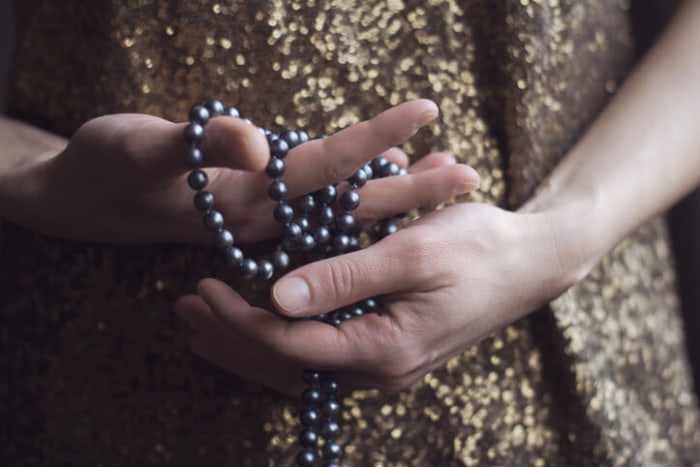How do you recognise real pearls?
How is a pearl made? And, are artificial pearls of the same high-quality as naturally grown ones?
Stylish looks for less
With their seductive sheen, pearls are a popular jewellery item: whether as stud earrings, as a pendant and chain or made into a ring, real pearls are probably the most beautiful of all the ocean's bounty. But how do you recognise real pearls? How is a pearl made? And, are artificial pearls of the same high-quality as naturally grown ones?

©CoffeeAndMilk
Find all you need to know about real pearl jewellery here.
Discover high-quality pearl jewellery and much more at greatly reduced prices at Lounge by Zalando - and save up to 80%* per day as a member!
How can you recognize real pearls? The jewels of the sea
1. Real pearls have fine irregularities.2. They can also be flat, oblong and teardrop-shaped.3. Try to gently bite onto them: an authentic pearl is cold and hard.4. They feel rough and uneven like a large grain of sand.5. A flawless pearl is usually an imitation.
Numerous mystical tales and legends are associated with pearls. Genuine, naturally grown pearls are rare and were difficult to "fish" from the sea for millennia. Pearls are formed when foreign bodies become lodged within an oyster's shell - although only a few shells are able to form pearls at all. The pearl oyster is one of them. If parasites or foreign bodies, such as grains of sand, invade a shell's interior, the oyster will separate mother-of-pearl to protect themselves. Mother-of-pearl consists of calcium carbonate and conchiolin - the basis of the later pearl.
However, in order to create a pearl, a foreign body alone is not enough. At the same time as the intruder, a piece of the shell's mantle tissue of the shell, known as the epithelium, must also enter the shell. This ensures that the foreign body is repeatedly covered with mother-of-pearl - leading to the creation of a pearl. Numerous factors must coincide to make just one naturally grown pearl - a rare coincidence. Too rare when there is a growing need for shimmering jewellery.
Cultures pearls: Real pearls made by human hand
Pearl breeding was first successful in Japan around 100 years ago.

©mammuth
The pearl-forming shells are kept in large artificial pearl banks under ideal conditions. Instead of a naturally occurring foreign body, an irritant or 'nucleus' is planted in the shell. The American Mississippi oyster is widely used. The epithelium, which is necessary for nacre formation, also enters the shell with the nucleus.
The ensuing process is similar to the natural one: within three to five years a pearl is formed. The cultured pearl is by definition a real pearl - it was only "made" by man rather than by nature.
How to distinguish pearls that are from artificial imitations
What are their characteristics and how do you recognise real pearls other than by appearance? Most real pearls have fine irregularities; some are anything but round in shape and may be oblong, flat or teardrop-shaped. Real pearls are also recognised by their coarser structure which is still present after polishing and being made into a piece of jewellery. Artificial pearls are completely smooth and round.
Are you unsure whether your pearl jewellery is genuine? Try to bite gently onto them. A true pearl feels cold and hard and is rough and uneven like a large grain of sand. By contrast, artificial pearls feel warm and rather soft to the touch and are completely smooth. A completely flawless pearl is usually an imitation.
Statement pearls and coloured beads: real, or not?
Big colourful beads are certainly eye-catching - but can they possibly be real?

©flyparade
A genuine pearl has the same natural colour as mother-of-pearl: soft white with a beige-silver sheen. However, they can be dyed to get a rose, yellowish or blue colour. Real black pearls may be coloured or they may be Tahitian pearls obtained from the black-lipped pearl oyster. Pearls from these oysters are often grey or anthracite. They're only completely black in very rare cases and therefore valuable.
Size is not necessarily an indication of authenticity. For example, the black-lipped pearl oyster can produce pearls of an enormous size. South Sea pearls, which are bred mainly in Australia, Indonesia and the Philippines, can also be very large and can have a diameter of up to 20 millimetres which is not uncommon.
Discover high-quality pearl jewellery and much more at greatly reduced prices at Lounge by Zalando and save up to 80%* per day as a member!